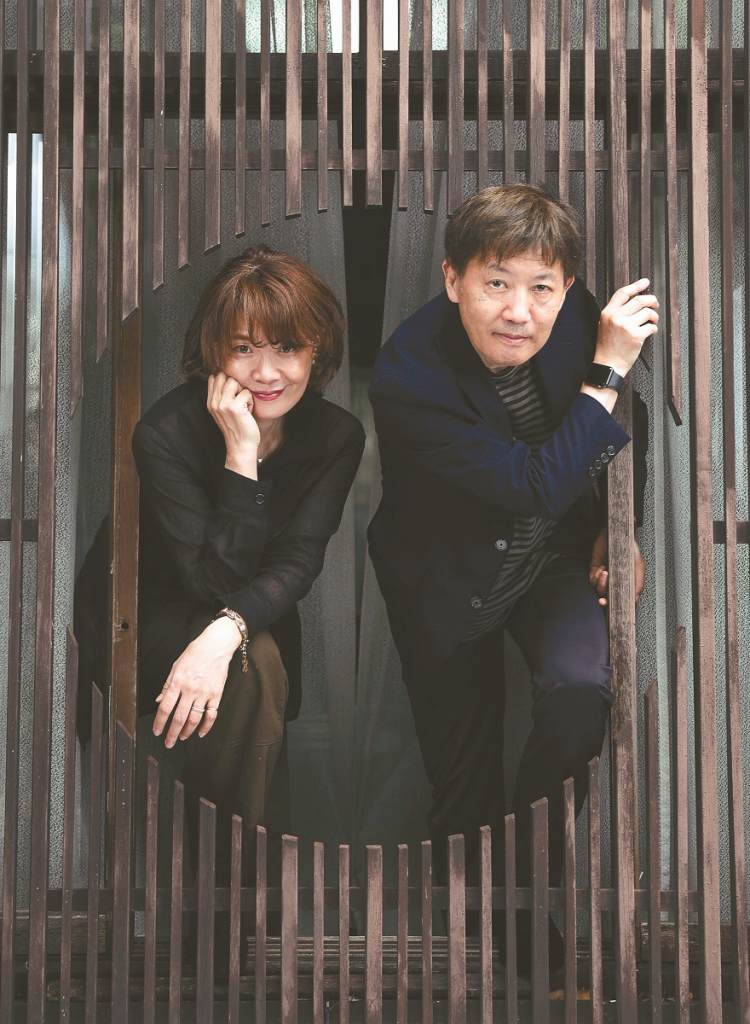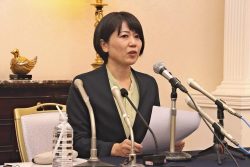
Plinivs, or Pliny the Elder
12:00 JST, September 15, 2023
The 12th and final volume of the manga “Plinivs” was recently released. Created by two mangaka, Mari Yamazaki and Tori Miki, the work is a biography of Plinivs, or Pliny the Elder (23-79 A.D.).
Pliny the Elder was a naturalist who also served as an admiral and a procurator in the Roman Empire. He authored “Natural History,” a 37-volume series in which he wrote about everything from plants and natural phenomena to monsters and strange tribes of people. He died while observing the great eruption of Mt. Vesuvius.
The first volume of the manga was released 10 years ago. Yamazaki and Tori recently sat with The Yomiuri Shimbun for an interview about the work.

Mari Yamazaki, left, and Tori Miki
The Yomiuri Shimbun: How do you feel about the completion of the series?
Yamazaki: We made it to the finish line.
Tori: It was 10 years of fun. It went by fast.
The Yomiuri Shimbun: How did you split the work between yourselves?
Yamazaki: I wrote the plot, jotted down ideas [about the layout] and drew characters. Mr. Tori drew the background and added finishing touches. I drew on an iPad, and Mr. Tori drew by hand. Then we digitized the whole thing. I sent him data, which he combined with his work saved on a computer. He then added shadows and perspectives to the pictures to complete each page. Yes, he was the director of special effects, too.
Tori: Sometimes I oversaw drawing the rough ideas on paper, especially for visually striking events, such as the Great Fire of Rome and an earthquake.
The Yomiuri Shimbun: How did you start collaborating and why?
Yamazaki: Even while I was working on “Thermae Romae,” I thought of doing a serious work about Rome after finishing the series. But working on a historical subject is difficult to do all by myself. Mr. Tori helped me with the last three installments of “Thermae Romae,” so I suggested that we collaborate on “Plinivs.” Mr. Tori is a research nerd. Unless you’re a nerd, you can’t produce this kind of manga. I needed a partner who is committed to drawing buildings and various incidents authentically and precisely.
Tori: I went on research trips, but it’s all ruins, and the buildings are no more. So, I constantly looked them up in various reference materials to decide how to draw them. There are several patterns to the buildings [of ancient Rome], and it’s easier to draw them when one understands that.

Plinivs’ death scene amid smoke from a volcanic eruption
The Yomiuri Shimbun: In the story, Plinivs is depicted as someone who sees everything evenly and objectively.
Yamazaki: To him, the world of humans is also just an object for observation. He tends to look at Rome, where the emperor Nero, the Senate and people roam about, in the same way he watches an ant colony or a bees’ nest. He never worships humans and their civilization. What if he slips forward in time and arrives in modern times? I guess he’ll just record what he sees in a matter-of-fact way. [If he sees a train,] he’ll write something like “people here have built something made of iron that runs fast and they travel in it.”
Tori: Or he thinks things haven’t changed from ancient times.
Yamazaki: He’s visited and looked at various places, so he’s aware that it’s impossible to share every sense of value [with other people]. He’ll never ask, “How come it’s become like this?” He’ll probably just think, “I see people will be like this in time.”
Tori: He may fit in quite well being so nonchalant.
Yamazaki: I think the reason for drawing manga on a historical subject is to tell readers that in the world where humans live, anything that has happened in the past can happen again in any era. In this manga, I portray early Christianity like a new religious movement of today. Nero manipulates people with music and dance, which is like what the GHQ (General Headquarters) did [to Japan] after World War II to divert public attention to entertainment and sports.
History is sprinkled with clues of how to live your life now. Then you start seeing through Plinivs an indication of why humans are born with imaginative power. Of course, he’s such a non-economical person who bucks the modern trend of prioritizing saving energy and being efficient, even in dealing with people’s minds.
Tori: And our manga is far from being cost-effective.
Yamazaki: Things with poor cost-effectiveness tend to have a distinct flavor of their own. Plinivs’ study, which Mr. Tori drew, is a good example, because he drew so many interesting things in the room, like a Tezuka Osamu Bunkasho manga prize trophy, even though no one may notice.
Tori: I drew them while having fun with all the trouble involved. I’ll be happy if readers even slightly gain the impression that the backgrounds are as significant as the characters.

The Roman emperor Nero is forced to kill himself.
Mari Yamazaki was born on April 20, 1967, in Tokyo and grew up in Hokkaido. In 1984, she moved to Italy and studied art history and oil painting at Accademia di Belle Arti di Firenze (the academy of fine arts of Florence). Her major manga works include “Thermae Romae” and “Steve Jobs.”
Tori Miki was born on Feb. 23, 1958, in Kumamoto Prefecture, where he was also raised. He has mainly drawn gag manga and also created sci-fi, horror and essay-style manga. His major works include “Dai-Honya” and “SF Taisho.”
"Culture" POPULAR ARTICLE
-

Van Cleef & Arpels Dazzles with Art Deco Artisanry at Tokyo Exhibit
-

Disney’s ‘Twisted-Wonderland’ Animated Series Puts Villains in Spotlight: New Show Features School Inspired by Classic Disney Films
-

Japan Plans to Distribute Manga Overseas Via New Platform
-

Japanese Craftsman Produces Beautiful and Durable Bags Made of Wood
-

Ayumi Hamasaki’s Shanghai Concert Canceled Day Before Schedule as Part of Beijing Backlash
JN ACCESS RANKING
-

Keidanren Chairman Yoshinobu Tsutsui Visits Kashiwazaki-Kariwa Nuclear Power Plant; Inspects New Emergency Safety System
-

Imports of Rare Earths from China Facing Delays, May Be Caused by Deterioration of Japan-China Relations
-

Japan Exports Rise in October as Slump in U.S. Sales Eases
-

Govt Aims to Expand NISA Program Lineup, Abolish Age Restriction
-

Blanket Eel Trade Restrictions Rejected




◎上海の日本アニメイベント_20251129YGTGS000921_C-250x168.jpg)





















